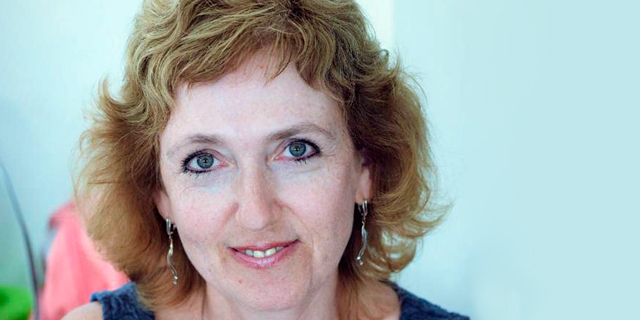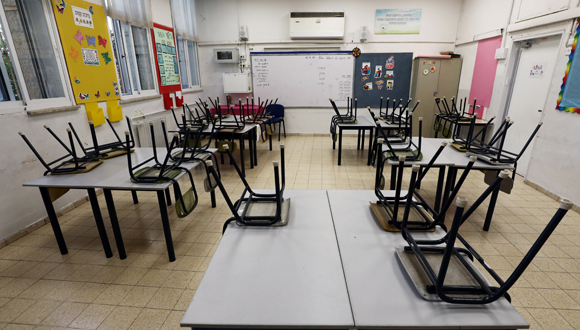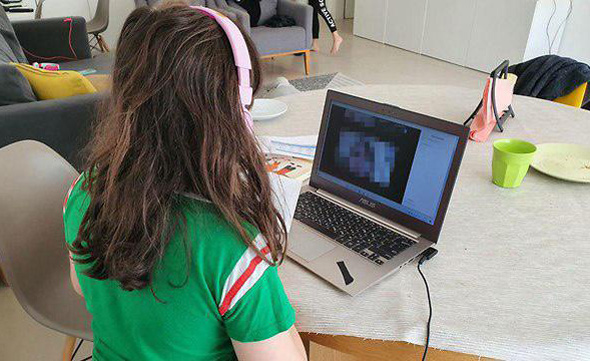
Expert
Schools Shutdown: There are many benefits to remote learning, edtech expert reassures anxious parents
Professor Ina Blau argues that the Covid-19 lockdown has forced the education system to adopt advanced teaching methods and that there is no turning back
Omer Kabir | 09:50, 26.09.20
One of the memes making the rounds on Facebook in the days before Israel went into its second lockdown last week, lamented the young school children who had just begun their studies on September 1 and already had to bid farewell to the classroom.
Indeed, the disruption of routine studies for an unknown period, for the second time in six months, made parents anxious about their children’s educational continuity, which only piled on to the anxiety caused by the need to watch over the kids at home and make sure they attend their online classes and submit assignments, all the while having to work at their day jobs, complete their own assignments, and maintain contact with clients.
Hovering above the daily worries is the substantial concern over the long term impact that the unscheduled disruptions to routine studies will have on their children’s education going forward. Those who specialize in technology driven remote education, however, think that the rough situation is a golden opportunity to improve learning methods in Israel and researchers studying what is being done during both lockdowns draw encouragement from the significant changes they are beginning to identify in teachers and schools.
“When dealing with the fifth-grade and higher, I identify significant advantages to remote studies,” Professor Ina Blau, who heads the post graduate education program at Israel’s Open University as well as the institute’s educational technology research center, told Calcalist. “As people who specialize in education that combines technology, we battled and battled, now, suddenly, we are identifying a significant breakthrough,” she said. “Everybody is now dealing with it, taking an interest, and desiring for it to work so that the students aren’t harmed.”
Blau is at the center of the virtual nervous system of the remote education world. Not only does she work at the institution with the most experience in the field in Israel, one which for nearly half a century has been basing its activity on developing methods and technologies for remote learning, she is embedded in the subject on a daily basis, both in her teaching and her research. Over the last few months she served as a member of the Health Ministry’s Covid-19 Chief Scientist’s committee and has been directly exposed to the way in which the education system has been functioning.
At a time when many believe the situation is dire and both students and teachers are suffering because of the education system’s unpreparedness, Blau chooses to paint a different picture.
“It is an opportunity to develop skills,” she said. “There is a general societal perception as if students today have a natural affinity to studying in a digital setting since they are exposed to technology from a very early age, what’s referred to as ‘digital kids.’ But it turns out, that is not the case. They may know how to operate the technology, but to study using it? Students are really unprepared for that, so now is the opportunity to provide them with proper learning skills, which can later be converted to effective performance at work.”
Blau highlights two primary skills that can be developed by remote learning. The first is digital literacy and the second is self-directed learning. “Say I have an assignment that I have to submit in a day or two. Remote learning demands that I figure out how to complete it by myself, who I can approach for help, how I check my own work, and much more,” she said.
According to Blau, this is not a theoretical situation, but one that takes place in practice. “It is a type of learning that is experiencing a significant leap nowadays,” she said. “Only a part of studying is done in a synchronized manner. The majority of schoolwork is done by working alone or with a group on an assignment.”
“The teacher begins the lesson, provides a general explanation, hands out an assignment and then the children split up into small groups on Zoom, with the teacher switching between chat rooms. The students work together to create or solve something and then present it to the class. Learning has become more active using this method. During the current lockdown and after the teachers received massive amounts of training over the summer break, I believe it will work better than it did during the first lockdown in the spring.”
How common is it and how much of what you are describing is more theoretical than reality based?
“It is happening in practice by the top teachers, but not to the extent that we would have liked it to. It is expanding and will eventually catch on in a bigger way. The model enables taking advantage of the momentum. Even if the teacher only provides the assignment and not the full framework, it still opens the door to developing new skills that were not being developed in the classroom. Over the summer there was extensive training and I believe it will be happening much more frequently over the coming years since a lot of resources went into training and the teachers receive ongoing guidance.”
You said it was mostly the top teachers that were adopting the methods. What about the rest, who are less invested and aren’t really trying to adapt the lesson plans to the new conditions?
“The same teacher who simply lectures the class would have lost the students’ interest in the classroom setting too. The students may not have been able to switch off the camera there, but they would have busied themselves with other things. Nowadays the technology places a mirror in front of the teachers, they can see when something doesn’t work and perhaps give other teaching methods a try. In the classroom, a student who tunes out starts doodling in his notebook and the teacher doesn’t always notice it. On Zoom, when everyone is behind a black screen and not responding to the teacher’s questions, he or she can tell that the class isn’t with them. The feedback teachers receive from the virtual lesson can spur the teacher to do better and we can tell teachers are taking notice. I’m seeing it as someone who deals with training teachers, they want to improve their profession using this new medium, they ask questions they’ve never asked before. Everyone is taking an interest and that's where I draw my optimism from.”
So you’re saying that a poor teacher will remain that way whether it’s in a classroom or on Zoom.
“The medium is not important. The circumstances that forced teachers to work in a virtual classroom offer an opportunity to dust off education methods. Usually in our professional lives, after three years we begin running on autopilot. But now, we've been forced to do things differently and consider how we go about implementing change. I think that everyone is in for a change for the better. Perhaps for some, it will only be a minor change, but everyone will be impacted and students will be forced to think and develop new skills.”
There is a big problem in the utopia you describe: many students don’t own their own computer to join classes through and may not have access to a computer at all.
“Nearly all children from grade five and up have a smartphone. It allows them to take part in the online lessons, but it is very difficult to complete assignments on. It’s a matter of time management. They can attend classes on the phone and then work on assignments once the home computer is freed up. We ought to reach a state where every student has access to a computer and local municipalities are doing it when they see that the national government is failing. But the government should be handing out computers like they did in other developed countries.”
We’ve been speaking mostly about older children, but what about the younger ones, who have difficulty coping with independent learning or learning in front of the computer?
In their case, making the learning process efficient is determined by the extent to which the parents can help. I don't identify the same opportunity with the younger children. Parents or an older sibling are needed to facilitate the technical side of things and if none are available, it’s a problem. Younger children should go to school at least for part of the time. If I was the one making the decisions, I’d say that everyone up to the third grade must attend school every day.”
Is there any significant harm being done to the children in the lower grades?
“I don’t think that one month away will cause a significant gap. Disparities can be overcome in a reasonable way. On the other hand, an opportunity has arisen to teach reading and basic mathematics using games. There are alternative methods of teaching that can be even more effective for some children because it is a lot more tangible. In recent years, they have been introducing games into the classroom too, nowadays, using technology helps.” Blau’s vision is utopian, perhaps too utopian. As someone who believes in all her heart in the advantages of remote learning, it appears that she is quick to point out its advantages while ignoring its drawbacks. She is such a firm believer that she wants to see remote learning combined with regular classwork even after the Covid-19 crisis is behind us. “I hope that starting from grade five, all students will learn for at least a day or two a week from home,” she said. “There are a lot of things that you can learn more effectively and it also helps those students who get distracted from the goings on in the classroom,” she added. “I hope that the teachers embrace it and carry on with it going forward.”
